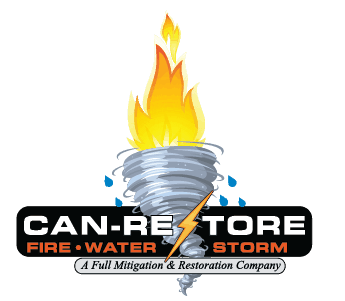
Water pipes exposed to winter temperatures may freeze and cause pipes to burst. When they thaw, they can pour hundreds of gallons of water per hour into the home causing a devastating flood. The best method to prevent frozen pipes is a combination of heat tape and foam insulation.
Prevent Pipes from Freezing
Heat tape contains a heating element and plugs into an outlet to warm the pipe. Be sure to follow the manufacturer’s specific installation instructions. Always begin close to the outlet and work away from it. Never allow heat tape to cross over itself.
Tip: Purchase automatic heat tape for use on plastic pipes. Not all heat tape is suitable for plastic pipe.
Choose Method 1 or Method 2 according to the manufacturer’s directions.
Method 1: Wrap the tape in a spiral around the pipe. Apply vinyl electrical tape three times around the pipe and heat tape to secure it at each location where the heat tape completes one full turn around the pipe.
Method 2: Run the tape straight along the pipe without wrapping it. About once per foot or according to the manufacturer’s directions, wrap the pipe and heat tape with vinyl electrical tape to hold it in place.
Cut pieces of foam tube insulation to length and fit them over the pipe by opening the slit and pressing them onto the pipe. They will close back around the pipe and insulate it. Fit pieces snugly end to end.
Where pipes make a turn, cut the ends of two pieces on a 45-degree angle in order to fit them together.
Secure foam pipe insulation in place with insulating tape made from foil and foam. Use it to join pieces of foam tube or wherever gaps occur in the foam tube insulation, especially at points the pipe makes a turn.
Plug the heat tape into the outlet to begin heating the pipes.
Tip: Sometimes it is not possible to heat or insulate pipes, especially if they are located in poorly insulated outside walls. Keep the water moving in these pipes to prevent them from freezing. Open the faucet enough to allow just a trickle of water to flow.
Thawing Frozen Pipes
Inspect frozen pipes for damage and know the location of your water’s main shut-off valve. Be informed on how to turn it off. There are several ways to thaw pipes and which method you use depends on where the frozen pipe is located.
Open the faucet closest to the frozen area. Ice or frost on the pipe is a good indicator of the frozen area. Always work away from the faucet so that thawed water has a place to go.
Use a space heater to thaw frozen pipes located in a cabinet or crawl space. Put the heater on a stable surface where it cannot tip over and direct the heat toward the frozen pipe.
A blow dryer set to blow hot air works well on exposed pipes, and may be used in conjunction with a space heater if you have the room to work with both. Direct the hot air on the frozen pipe and work back and forth about a foot at a time.
A heat lamp or infrared heater focused on a wall may thaw the pipes inside the wall. There is risk involved–the pipes may have split and you won’t know it until they thaw and start flooding the home. It may be safer to open the wall before thawing the pipes.
At Can-Restore we are providing these tips to help you prevent water damage from frozen water pipes, but if the worst happens and you have water damage from a burst frozen pipe, call us today for immediate water damage repair.

